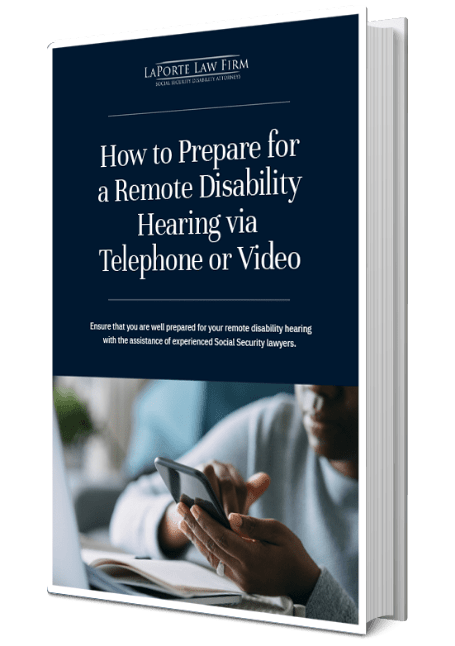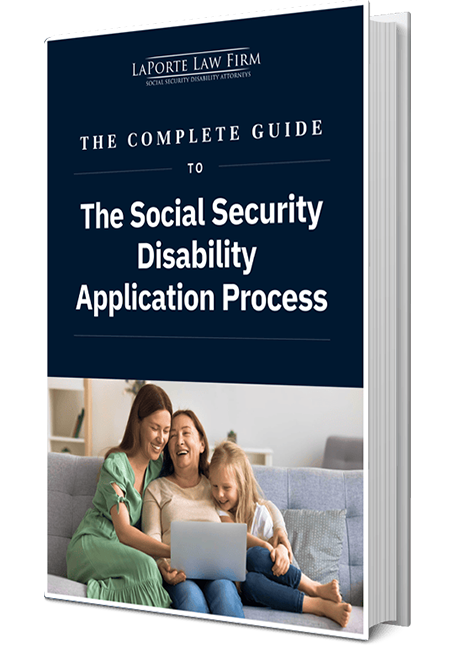
Our firm frequently receives questions about what happens when someone is approved for both Supplemental Security Income (SSI) and Social Security Disability Insurance (SSDI). While many people can qualify for both programs at the same time, beneficiaries need to understand the differences between them. Each program has its own requirements and implications, so individuals must be well-informed about what to expect moving forward.
If you have questions, you have come to the right place. This article will help you understand the differences between SSI and SSDI.
Differences Between SSI and SSDI
- Both SSI and SSDI are designed to help disabled individuals in need, but they serve distinct purposes and have unique criteria. If you find yourself in the position of receiving both SSI and SSDI, you should first understand how these benefits interact and what steps you need to take next. While dual approval for SSI and SSDI can provide a more stable financial foundation, it also involves specific regulations and potential implications for your overall benefits package.
Definition of SSI
SSI is a needs-based program that provides financial assistance to individuals with disabilities who have limited income and resources. SSI is funded by general tax revenue, and eligibility is not based on the applicant’s work history.
However, nonmedical requirements, such as income thresholds and asset limits, must be met for eligibility. For 2025, the federal benefit rate (FBR) is $914 for individuals and $1,371 for couples.
Many states offer supplements to the federal amount (e.g., California’s SSI State Supplementary Payment, or SSP).
Definition of SSDI
SSDI, on the other hand, is an insurance program for workers who have paid into Social Security through payroll taxes. SSDI does not have income or asset limits, but there are work-related criteria. SSDI applicants must have earned a sufficient number of work credits (usually 40, 20 of which must be earned in the last 10 years).
SSDI beneficiaries also qualify for Medicare two years after their first date of eligibility for a disability payment.
Eligibility Criteria for SSI
Eligibility for SSI involves both medical and nonmedical requirements.
- Medical eligibility: Like SSDI, SSI recipients must have a qualifying disability that prevents them from working.
- Income and resource limits: SSI has strict income and asset limits. Individuals must have assets below $2,000, while couples must have assets below $3,000. However, not all assets are counted; your primary residence and one vehicle, for instance, are excluded.
- Automatic Medicaid: In many states, qualifying for SSI automatically makes you eligible for Medicaid, which helps cover medical expenses.
Eligibility Criteria for SSDI
SSDI applicants must meet specific eligibility criteria related to work history and their medical condition.
- Work history: SSDI requires applicants to have worked and earned a sufficient number of work credits (usually 40 credits, with at least 20 earned in the last 10 years).
- Disability determination: The disability criteria for SSDI are the same as for SSI, but the difference lies in financial eligibility. That is, SSI is based on income/assets, while SSDI is based on work history.
- Medicare waiting period: SSDI beneficiaries must wait 24 months after approval to become eligible for Medicare. The initial 24 months of receiving disability benefits serves as the waiting period for Medicare coverage. During this time, the beneficiary might be able to access health insurance through a previous employer. It is recommended to reach out to the employer for details about available health insurance options.
Benefits of Qualifying for Both SSI and SSDI (Concurrent Benefits)
Some people qualify for both SSI and SSDI benefits if their SSDI payments are low enough. In this case, SSI can help supplement SSDI payments to ensure the individual reaches the federal benefit rate.
Concurrent beneficiaries enjoy two key benefits:
- Medicare for SSDI, which covers hospital services (Part A), medical services (Part B), and optional prescription drug coverage (Part D)
- Medicaid from SSI, which covers long-term care, home services, and other medical costs not covered by Medicare
Financial Implications: Impact on Monthly Payments
When you qualify for both SSI and SSDI, your SSI payments may be reduced based on your SSDI income. However, if your SSDI payments are low, SSI will make up the difference to reach the maximum allowable benefit for your state.
State supplements can also influence how much you receive. For example, California’s SSI state supplement provides additional benefits to its residents.
The Application Process for Concurrent Benefits
You can apply for both SSI and SSDI at the same time through the Social Security Administration’s (SSA) website or a local SSA office. The application will involve a combination of medical and financial eligibility reviews.
- SSI applications will require documentation related to your income, resources, and medical condition.
- SSDI applications will focus on your work history and medical condition.
Required documentation
When applying for both programs, you’ll need to submit:
- Medical records
- Proof of income and assets
- Work history documents
- Relevant SSA forms including (SSA-8000, SSA-16, SSA-3368, SSA-827 and SSA-8240SA-8240)
- Evidence of receipt of any other public disability benefits received such as worker’s compensation benefits or SDI from the EDD offices
Timeline for approval
The approval process for both SSDI and SSI programs can take some time. On average, it takes about six to eight months for a decision on SSDI cases, and sometimes less time for SSI cases. However, these timelines can vary based on individual circumstances and the complexity of the case.
Both programs require medical evidence to establish disability. The SSDI process, however, is generally more complex because it involves reviewing not only the medical condition but also the applicant’s work history. Specifically, it considers how long the individual has worked and paid Social Security taxes. This can extend the process in SSDI review cases, especially in situations where the individual’s insured status has expired, requiring proof of when the disability began. The individual must establish that the disability began within five years from the last date they paid FICA taxes, or the “date last insured.”
In general, SSDI claims typically take longer to process than SSI claims due to the additional step of evaluating both medical and work history (insured status). The time it takes can also depend on the details of the case, whether additional medical evidence is required, and whether an appeal is necessary.
Payment Calculations
SSDI payments are based on your work history and earnings. SSI payments are calculated separately, with your SSDI payments being counted as income. If your SSDI is low, SSI will supplement it, or bring your total benefits up to the federal benefit rate.
Back pay considerations
SSDI may provide back pay up to 12 months before your application date, while SSI back pay is generally limited to the month after your application is filed. Back pay for both benefits is typically issued in a lump sum for SSDI and in up to three installments for SSI.
In a concurrent claim (when both SSI and SSDI payments are issued), the SSA will combine the SSI and SSDI back pay calculations. The individual will first receive the SSI back pay in a lump sum (payable in up to three installments every six months). Then, once SSDI benefits are approved (and after the five-month waiting period), the SSA will issue SSDI back pay.
If SSDI benefits are awarded after the SSI is already being paid, the SSDI amount could “offset” the SSI amount. This means that you may no longer receive SSI if your SSDI benefits are high enough to exceed the SSI payment amount. In some cases, SSDI may be considered retroactively, and you may need to repay any overpaid SSI benefits.
Here’s the payment structure for SSI and SSDI back pay:
- The SSA typically distributes the back pay in installments. This is to avoid a large lump sum that could affect the claimant’s eligibility for certain benefits or assistance programs. The installments are spread out over three periods of six months each.
- Overall, the amount of back pay will depend on the approval timeline, your eligibility dates for each program, and how quickly the SSA processes the claim.
Potential Impacts of Dual Benefits
Receiving SSDI can affect your eligibility for other assistance programs, such as housing assistance or food stamps (SNAP, or Supplemental Nutrition Assistance Program). Similarly, you may lose SSI eligibility if your SSDI benefits exceed the income threshold.
Managing overlapping benefits
Managing Medicaid, Medicare, SNAP, and state supplements can be a complex process, but with a few tips and strategies, you can navigate these programs more effectively.
1. Medicaid
Medicaid provides healthcare coverage for individuals and families with low income, and eligibility can vary by state.
- Stay on top of eligibility: Medicaid eligibility can change based on income, household size, and changes in employment status. Keep your information updated to avoid losing coverage.
- California has made significant changes to its Medi-Cal financial eligibility requirements in recent years. Effective January 1, 2024, the state eliminated the asset test for Medi-Cal enrollees, meaning that assets such as bank accounts, cash, and property are no longer considered when determining eligibility. Instead, eligibility is now based solely on income.
- Additionally, as of January 21, 2025, the California Department of Health Care Services updated the Federal Poverty Level (FPL) thresholds used to assess Medi-Cal eligibility. These updated figures are used to determine income limits for various Medi-Cal programs, affecting both adults and children.
- Understand what’s covered: Familiarize yourself with the specific services covered under your state’s Medicaid plan, such as doctor visits, prescriptions, or dental care.
- Renew your benefits on time: Medicaid benefits typically need to be renewed annually or whenever your circumstances change. Be sure to submit your renewal paperwork on time to prevent any lapses in coverage.
- Use Medicaid managed care plans wisely: Some states use managed care plans to deliver Medicaid services. Check which plans are available in your area and which doctors or hospitals are included in these plans.
- Appeal if necessary: If you are denied Medicaid or your benefits are reduced, you have the right to appeal the decision. Be proactive about following the appeal process.
2. Medicare
Medicare is a federal health insurance program primarily for people 65 and older, or for younger individuals with certain disabilities.
- Understand the different parts of Medicare:
- Part A: Hospital insurance (often premium-free if you worked and paid Medicare taxes)
- Part B: Medical insurance (you pay a monthly premium)
- Part C (Medicare Advantage): Private health plans that cover Parts A and B and sometimes additional benefits such as vision and dental
- Part D: Prescription drug coverage (also requires a monthly premium)
- Choose the right plan: If you’re eligible for Medicare, assess whether Original Medicare (Part A and Part B) or a Medicare Advantage plan (Part C) is best for you. Compare coverage, costs, and additional benefits offered by Medicare Advantage plans.
- Review annually: Medicare plans change each year. Review your coverage during the Open Enrollment Period (October 15–December 7) to make sure your plan still meets your needs.
- Apply for Extra Help: If you have limited income, you may qualify for assistance with your Part D prescription drug costs through the Extra Help program.
3. SNAP (Supplemental Nutrition Assistance Program)
SNAP helps low-income individuals and families purchase food.
- Stay up to date on income and household size: The amount of assistance you’re eligible for depends on your household income and size. Update any changes in your household status to avoid delays or issues with benefits.
- Know your benefits cycle: Your benefits are typically provided on a monthly basis. Keep track of your benefit issuance date so you can plan your purchases.
- Use online tools: Many states offer online tools to check your SNAP balance, recertify, and update your information.
- Maximize your benefits: Plan your grocery shopping around your benefits and look for ways to stretch your dollars, such as shopping sales, using coupons, or buying store-brand items.
- Understand allowable purchases: SNAP benefits cover most food items, but not non-food items, including alcohol and tobacco. Be sure to check what you can buy with your benefits before shopping.
4. State supplements
State supplements are additional financial assistance programs provided by some states to those who qualify for SSI, Medicaid, or other public assistance programs.
- Check for state-specific programs: Not all states offer supplements, but for those that do, ensure you understand the specific eligibility requirements and how they interact with federal programs such as SSI.
- Stay informed on eligibility criteria: The amount of state supplementation can depend on factors such as income, living arrangements, and whether you’re receiving SSI.
- Report changes promptly: If your circumstances change (e.g., you move, change your income, or experience changes in your health), be sure to notify the appropriate agencies to avoid overpayment or underpayment.
- Use the extra funds wisely: If you qualify for state supplements, use the extra income for essential needs such as housing, utilities, or medical care.
General tips for managing all these programs
Effectively managing benefits from programs like the ones we’ve outlined above requires a comprehensive understanding of their individual requirements and potential interactions. It would help you to do the following:
- Keep documentation organized: Keep all your Medicaid, Medicare, SNAP, and state supplement documentation in one place. This includes notices, applications, renewals, and medical bills.
- Set reminders for important dates: Set up reminders for important deadlines, such as recertifications or renewals for benefits. Missing these deadlines can lead to a loss of benefits.
- Monitor your benefits regularly: Regularly check your benefit balances and usage, whether it’s for Medicaid claims, Medicare services, SNAP purchases, or state supplements.
- Seek assistance if needed: If you’re confused about eligibility, applications, or renewals, do not hesitate to reach out to the relevant agencies or local organizations for help. Many states have navigators or counselors who can assist with applications and maintaining benefits.
Being proactive, staying organized, and reviewing your benefits regularly will help you effectively manage Medicaid, Medicare, SNAP, and state supplements.
Importance of Consulting a Disability Attorney
A disability attorney can be invaluable in ensuring that your applications for SSI and SSDI are filled out correctly and that you meet all necessary eligibility requirements. They can also help gather the necessary documentation to support your claims. Additionally, if your application for either benefit is denied, a disability attorney can guide you through the appeals process, which includes four levels of appeal. Legal representation can significantly increase your chances of success during these proceedings. Contact LaPorte Law Firm if you are appealing a denial of SSI or SSDI benefits, or if you have any questions regarding the Social Security disability application process.
FAQs
Yes, you can qualify for both if your SSDI payments are low enough. SSI can supplement your income to bring your total benefits up to the federal benefit rate (FBR).
SSDI payments count as income when calculating SSI. SSI will make up the difference to reach the maximum allowable benefit for your state if your SSDI is low.
Yes, you will automatically qualify for Medicaid with SSI and Medicare after 24 months of SSDI eligibility. Many people choose to keep both coverages to pay for additional medical expenses that Medicare doesn’t fully cover.
Yes. If your SSDI increases (e.g., due to cost-of-living adjustments), it may push your income over the SSI income limit, potentially reducing or eliminating your SSI benefits. You will continue to receive your SSDI benefit even if you are no longer eligible for SSI.
Yes, SSDI back pay can go as far back as 12 months before the date of your application, as long as you are found disabled by SSA rules at least 18 months prior to the application date. In contrast, SSI back pay is paid starting from the first full month after your SSI application.
SSI back pay is typically paid in up to three installments, while SSDI back pay is usually paid in a lump sum upon approval.














